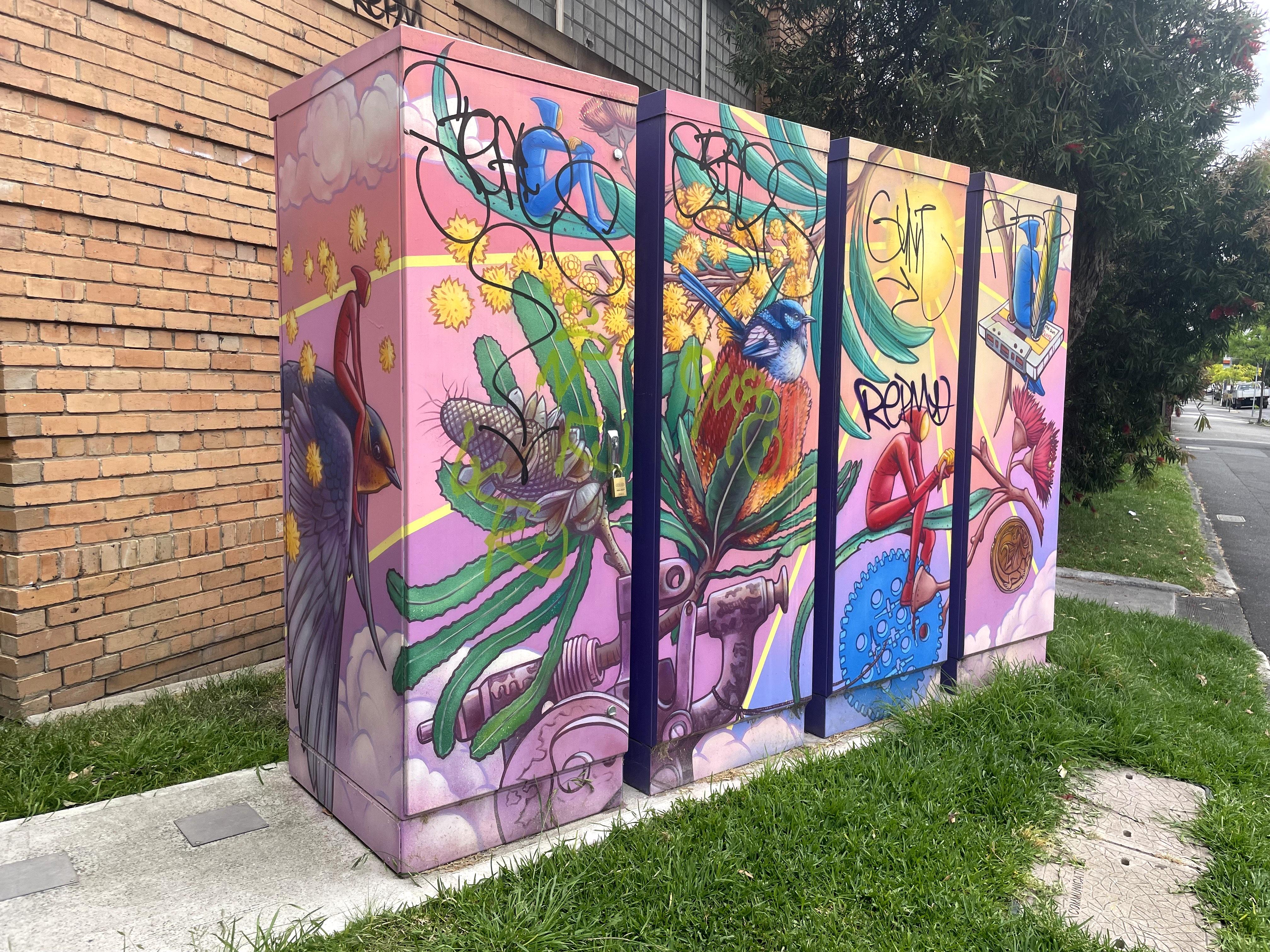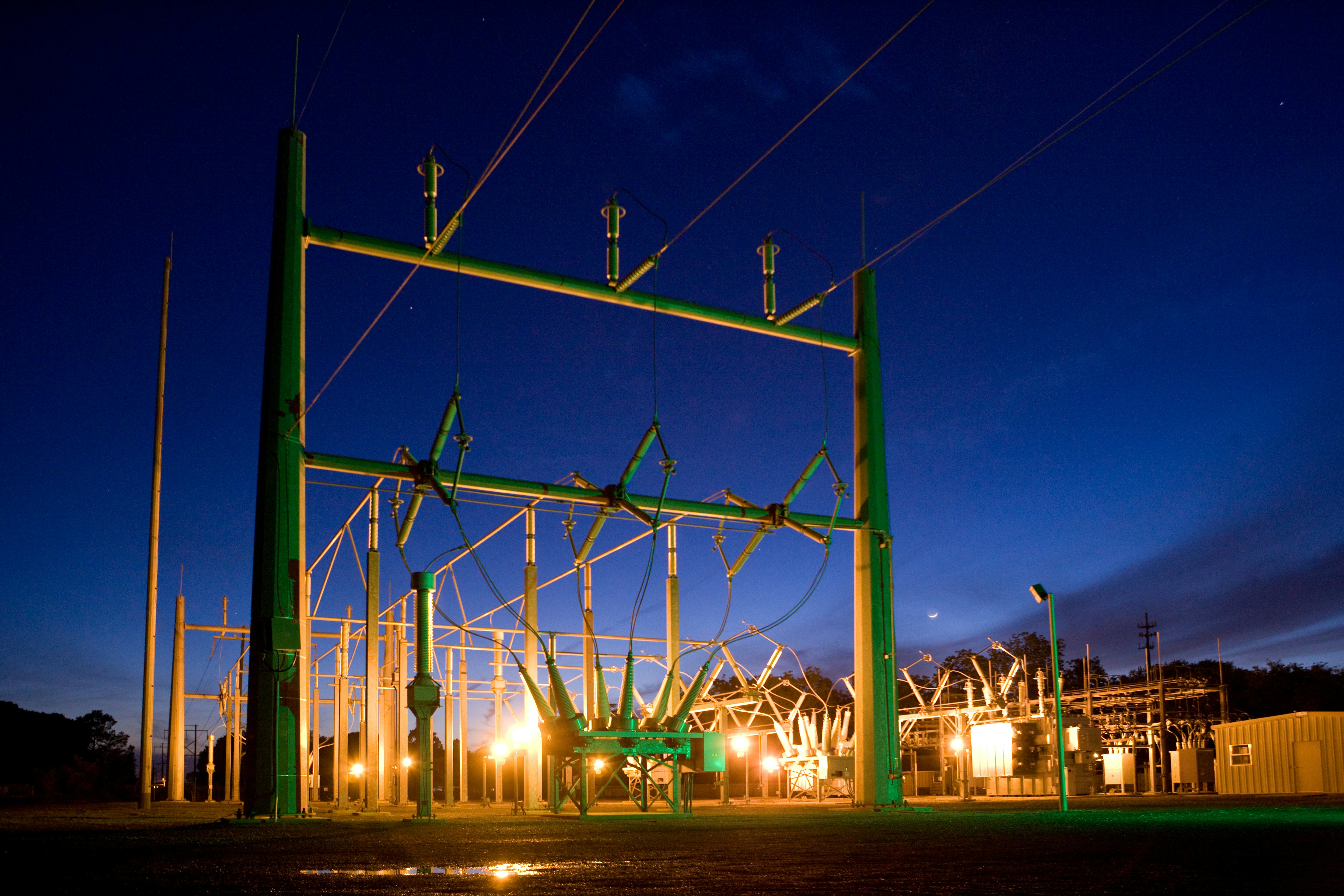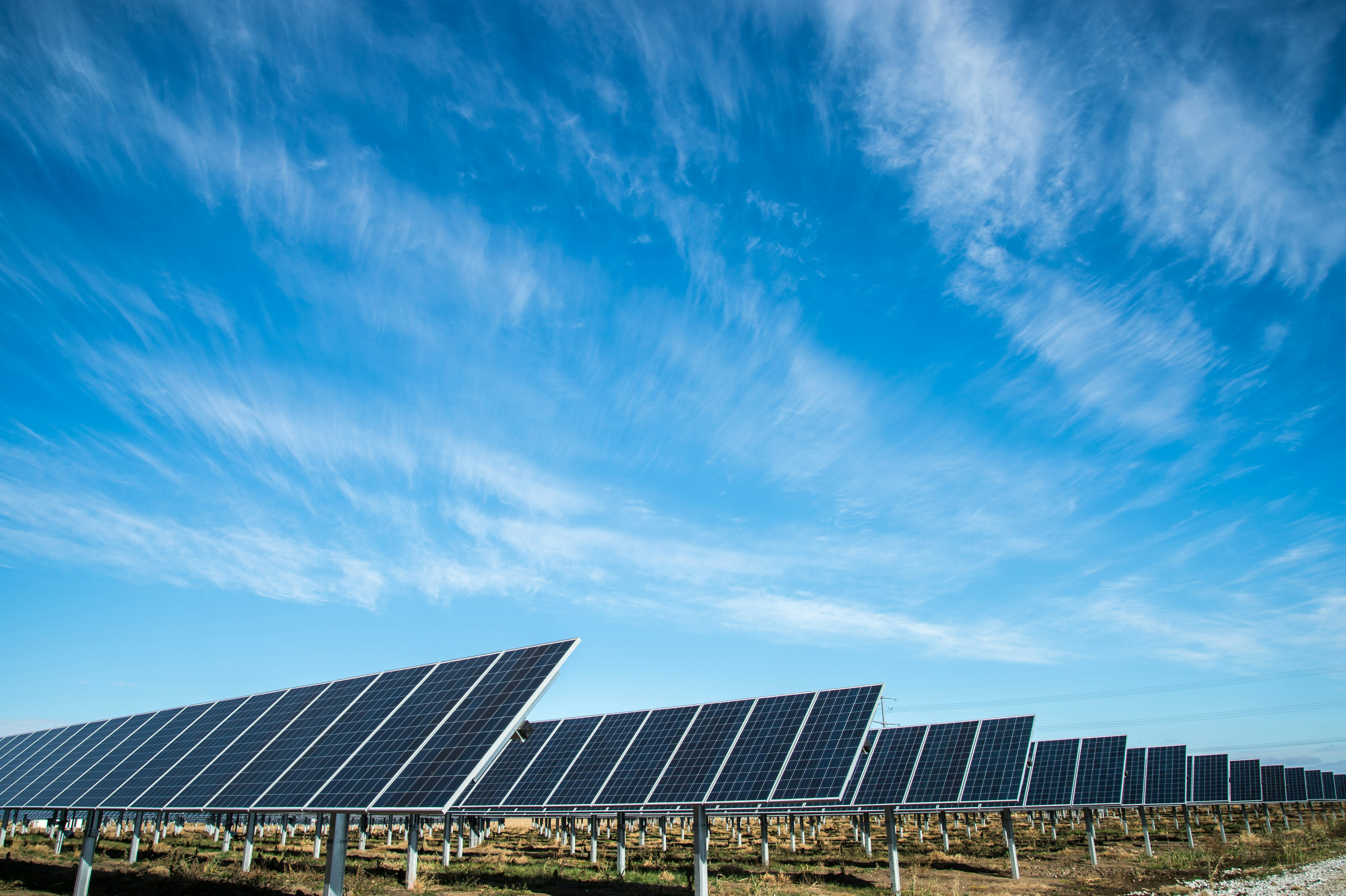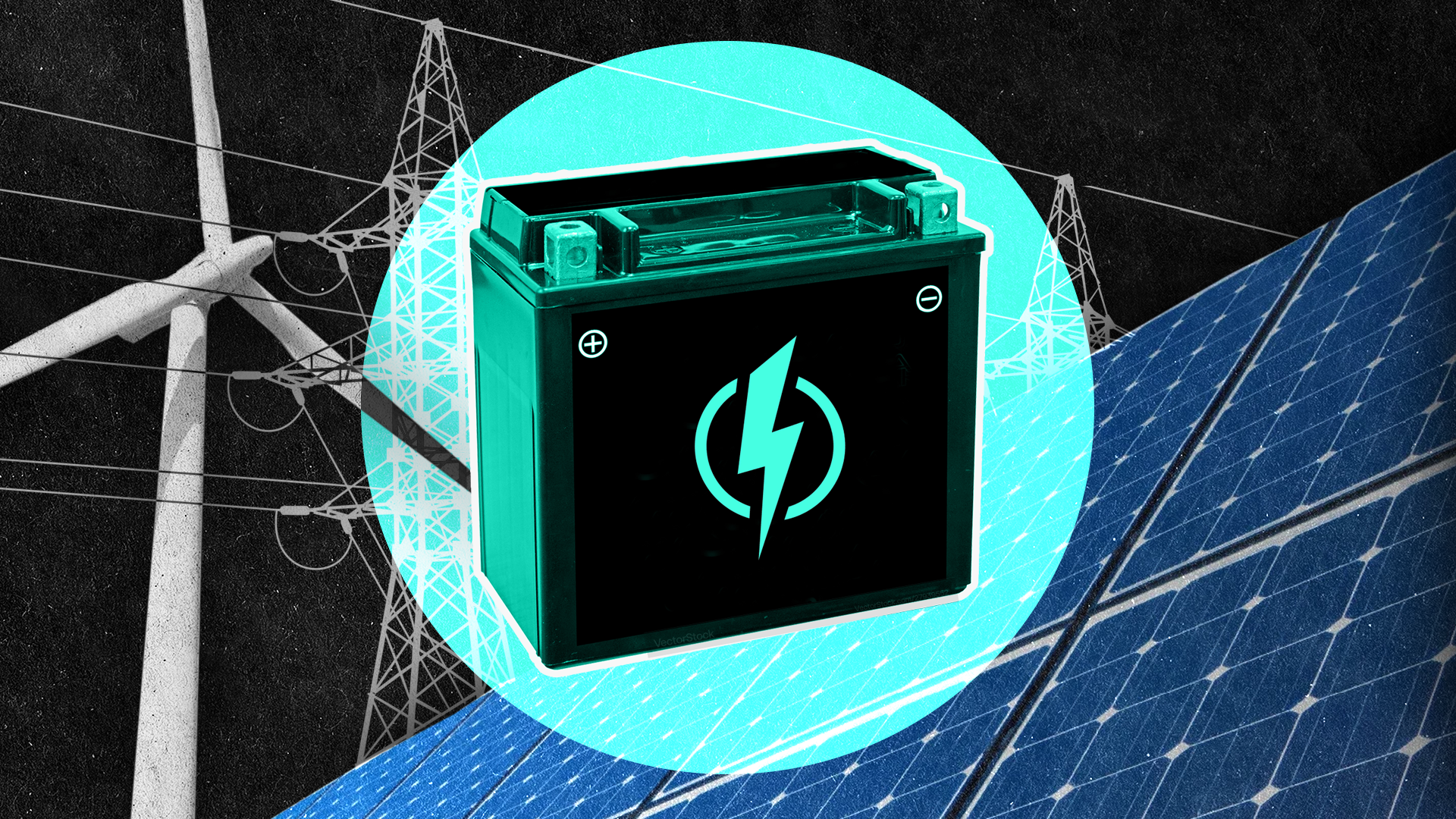Mid-scale ‘community batteries' have attracted growing investment over the last couple of years. So what are they — and why are they generating so much buzz?
 Victoria’s first inner-urban community battery, launched in June 2022 in the Melbourne suburb of Fitzroy North, marked one of Australia’s earliest forays into the community-scale battery space. : 360info: G Jennings-Edquist Free to use
Victoria’s first inner-urban community battery, launched in June 2022 in the Melbourne suburb of Fitzroy North, marked one of Australia’s earliest forays into the community-scale battery space. : 360info: G Jennings-Edquist Free to use
Mid-scale ‘community batteries’ have attracted growing investment over the last couple of years. So what are they — and why are they generating so much buzz?
Battery energy storage systems are set to play an increasingly important role in Australia’s transition to clean energy.
One type of energy storage that’s attracting growing interest and investment is the mid-scale or community-scale battery.
Here’s what you need to know about this increasingly popular form of energy storage, which is also known as a neighbourhood battery or community battery.
What are community-scale batteries?
A community-scale battery is a mid-sized battery that’s used for storing energy. It’s connected to the electricity distribution network which runs to your home or work.
Typically these batteries are 100 kilowatts to around 5000 kilowatts. Residential battery storage systems are around 10 kilowatts, so community-scale batteries are at least 10 times bigger than your typical residential system.
But they’re nowhere near as big as your massive, industrial-size Tesla Big Battery, which is 150 megawatts, or the other newer industrial-scale batteries, which are hundreds of megawatts.
Community-scale batteries are typically installed on the electricity network (we call this “in front of the meter,” as opposed to being installed in your home, in your garage or at work (which is known as “behind the meter”).
What about storage capacity?
Generally, community-scale batteries soak up excess power generated by rooftop solar during the day. That energy can then be used when there’s greater demand on the grid, typically in the evening.
As with almost all new battery energy storage systems, most community-scale batteries are made with lithium-ion battery technology.
These offer relatively short-duration storage: generally, around two hours. (Duration means the length of time that a battery can be used at its maximum, until recharging is needed.)
Where are these batteries?
Community-scale batteries are already being used around the world, though they’re still considered to be in their infancy.
They first emerged in Europe in around 2013. Since then we’ve seen projects develop in the US, Korea, Japan and, more recently, Australia.
In the last five years, there’s been increasing interest in community-scale batteries globally.
In Australia, one of the earliest community-scale batteries was in Victoria, in June 2022. Since then, the Victorian government has started to fund more projects around the state.
Other states have started doing the same. In mid-2024, the Federal government announced the roll-out of more than 420 community-scale batteries across the country.
Who owns community-scale batteries?
Because of the name, you might assume community batteries are owned by the community, or that the benefits flow directly to the community.
That’s not always the case. The name can just refer to the size.
There are community battery projects owned by the community, or where the community has a role in development, or where the benefits go to the community. But these mid-scale batteries are often owned by power networks.
They can also be owned by community energy groups, private investors or electricity retailers.
So, the name or definition may evolve in the future.
What are the benefits?
There are different benefits for various stakeholders that can also depend on the battery’s business model.
Installing a community battery is a statement of a community’s sustainability ambitions, far beyond just installing solar panels on your roof.
Neighbourhood batteries can also sometimes help lower household energy bills and (if a community energy group owns the batteries) allow a community to store and use renewable energy all year round.
This can also benefit governments.
State and national governments are now providing grants for community scale batteries because of the benefits to the wider energy system.
For example, community-scale batteries can allow more rooftop solar and EV chargers to be connected without expensive network upgrades.
Electricity companies also see their value. They are a way of investing in the network and providing greater stability and resilience without spending more on distribution infrastructure (poles, etc).
Finally, finance companies and investors are interested in community-scale batteries because of the value they can generate.
What about their role in the renewable energy transition?
Energy storage is critical for the renewable energy transition, because it can balance the amount of energy coming online.
As you have more renewable energy sources feeding into the grid, you also need more storage to be able to shift the electricity: to store it when it’s generated, and then to be able to draw on it later, when it’s actually needed.
Almost 3.5 million Australian households have solar. As government incentives for rooftop solar decline, people are looking for more ways to consume more of their own generated electricity. Storage at scale is the solution.
It’s likely business models of energy storage will evolve. For example, community batteries could explore tapping into other areas, like providing EV charging to neighbourhoods.
What challenges still need to be overcome?
There are three major challenges to community scale batteries.
One is around the time it takes to develop a community-scale battery project. University of Technology Sydney research has revealed it’s taking up to four years to get a battery ready.
One hurdle is volunteer fatigue as these projects are run by people with a passion for the tech and a project.
The way electricity tariffs are structured is another issue. With community-scale batteries, you can get charged for charging the battery and then for discharging the battery — so it’s like you’re being charged twice because you’re considered as both a generator and a consumer of electricity.
A third issue is around understanding how the business models work. There are many ways community-scale batteries can make money — but that level of complexity is sometimes hard for communities to grasp.
They often have to buy in that expertise, and as you increase the number of potential participants, it becomes more complex and the costs increase.
However, as more of these projects roll out as more of the experience and knowledge is shared, that will make it easier in the future for these types of deployments of mid-scale storage to happen quicker and faster and easier.
Are there solutions to these challenges?
In terms of tariffs, a lot of the electricity network companies offer trial tariffs. So if your community is looking for a battery project, you can use one of these, which avoids that double-charging described earlier.
Also, batteries are expensive. So, what we’ve seen is the electricity network companies providing some of their innovation funding towards some of the early projects. We’ve seen state and federal governments step in with funding programs as well.
What else has your research in this space found?
Community-scale batteries are a really important part of a microgrid.
A microgrid is essentially like a small version of the main electricity grid, where you have homes, businesses and renewable energy sources connected. If the main grid goes out, the microgrid can keep the power flowing.
Community-scale batteries allow solar, wind and storage assets, and the micro grids themselves, to be able to function by themselves when not connected with the grid. So our research looks at microgrids in rural and remote communities — communities in which these mid-sized batteries have been really critical.
We’re probably going to see more renewable microgrids around the fringes of the grid, and in remote parts of Australia. Mid-scale storage is going to be a key part of that story.
Dr Scott Dwyer is a Research Director at the Institute for Sustainable Futures (ISF) at the University of Technology Sydney. He works on issues relating to the transitioning energy system with a focus on customers and innovation.
Originally published under Creative Commons by 360info™.











